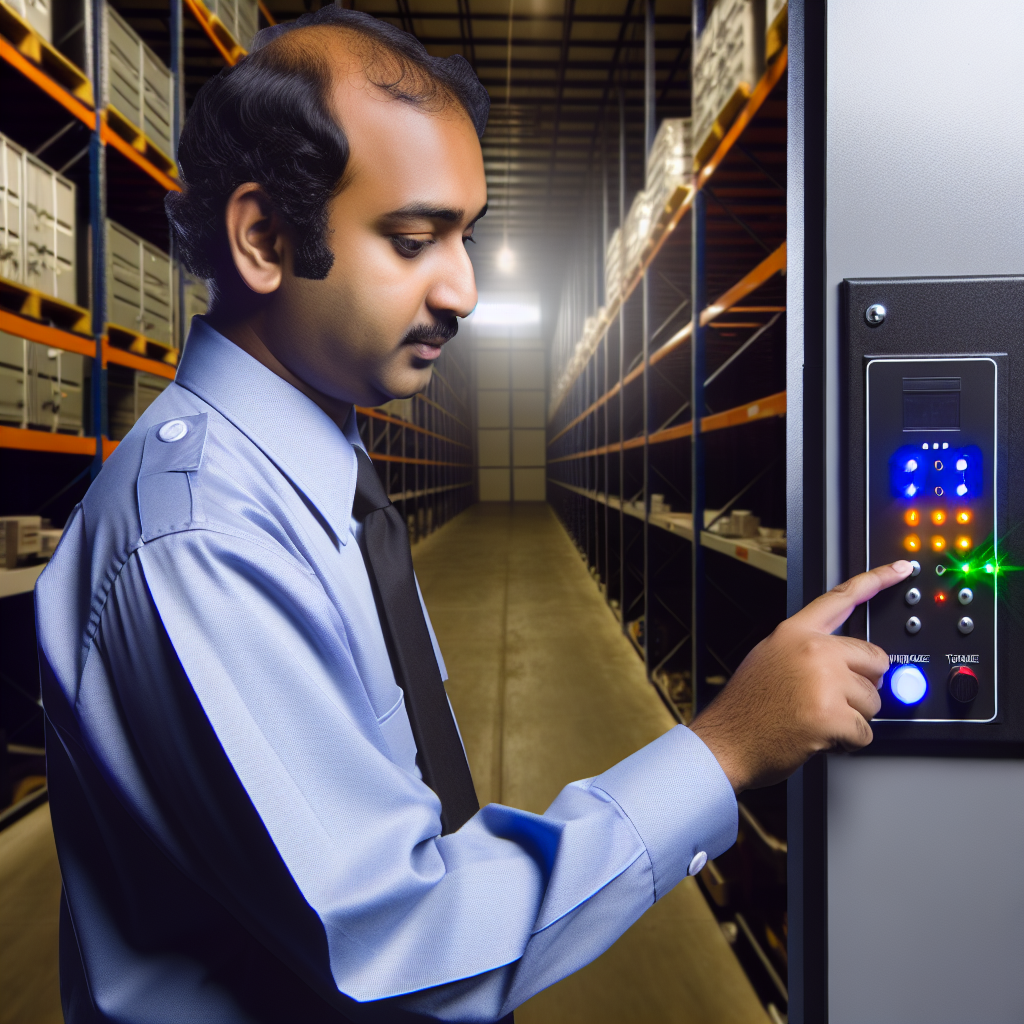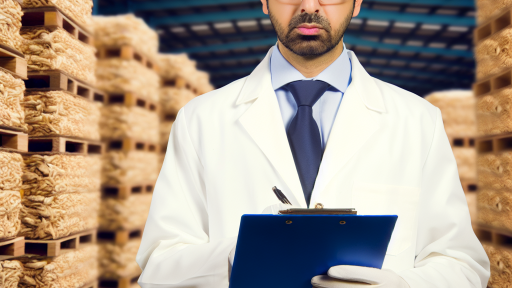Understanding the Importance of Temperature Control in Storage Facilities
Ensuring Product Integrity
Temperature control preserves the quality of stored products.
It prevents spoilage in perishable items.
Moreover, consistent temperatures maintain the integrity of materials.
For instance, pharmaceuticals require strict temperature compliance.
Thus, businesses should prioritize their storage conditions.
Impact on Operational Efficiency
Effective temperature control enhances operational efficiency.
It reduces waste associated with damaged goods.
Consequently, companies save money and resources.
Furthermore, well-regulated environments minimize the risk of accidents.
Employees can work safer when the temperature is stable.
Regulatory Compliance and Standards
Many industries face specific regulatory standards.
Temperature control is critical for compliance with health guidelines.
Failing to meet these standards can result in severe penalties.
Additionally, it can damage a company’s reputation.
Thus, understanding regulations is important for all storage facilities.
Transform Your Agribusiness
Unlock your farm's potential with expert advice tailored to your needs. Get actionable steps that drive real results.
Get StartedEnhancing Customer Satisfaction
Temperature control directly influences customer satisfaction.
Customers expect high-quality products upon purchase.
Ultimately, maintaining the right storage conditions fosters loyal clients.
Moreover, it helps maintain a company’s competitive edge.
Satisfied customers often lead to repeat business.
Temperature Control Strategies for Storage Facilities
Types of Temperature Control Systems
Temperature control systems are vital for maintaining optimal conditions in storage facilities.
They ensure products remain safe and intact during storage.
Two primary categories exist: active and passive methods.
Active Temperature Control Methods
Active systems use mechanical means to regulate temperature.
They include heating and cooling systems, such as HVAC units.
These systems maintain precise temperature standards.
They adjust automatically based on real-time data.
For instance, refrigeration units cool down spaces when temperatures rise.
Additionally, dehumidifiers control moisture levels effectively.
Active methods provide flexibility to respond to external changes.
Moreover, they can be integrated with smart technology for enhanced control.
Passive Temperature Control Methods
Passive systems rely on the building’s design and materials.
They do not use mechanical components for temperature regulation.
These methods often include insulation and strategically placed windows.
They help maintain stable temperatures with minimal energy use.
For example, thermal mass can absorb heat during the day and release it at night.
Ventilation also plays a key role in passive temperature control.
It facilitates air circulation and reduces overheating in storage areas.
Ultimately, passive methods can be cost-effective and energy-efficient.
Showcase Your Farming Business
Publish your professional farming services profile on our blog for a one-time fee of $200 and reach a dedicated audience of farmers and agribusiness owners.
Publish Your ProfileComparison of Active and Passive Methods
Both active and passive systems have distinct advantages.
Active methods offer precise control but may incur higher energy costs.
In contrast, passive methods utilize natural resources more efficiently.
Choosing the right system often depends on budget and specific storage needs.
In some cases, a combination of both methods optimizes temperature control.
This hybrid approach can maximize efficiency and maintain quality.
Key Factors Influencing Temperature Control
Insulation
Insulation plays a critical role in temperature control.
It reduces heat transfer and maintains stable temperatures.
Effective insulation materials include fiberglass, foam, and reflective barriers.
Insulating walls, roofs, and floors enhances storage efficiency.
Moreover, proper installation ensures optimal performance.
If insulation is damaged, temperature fluctuations may occur.
Ventilation
Ventilation is essential for regulating air circulation.
It helps dissipate heat and remove moisture from storage areas.
Natural ventilation utilizes windows and vents for airflow.
Mechanical ventilation systems provide consistent air exchange.
Incorporating fans and ducts enhances overall efficiency.
Regular maintenance of ventilation systems prevents blockages.
Material
The choice of storage materials influences temperature control significantly.
Temperature-sensitive goods require specific types of storage solutions.
For instance, food products need climate-controlled environments.
Using durable and thermal-resistant containers promotes efficient storage.
Additionally, materials should withstand varying temperature levels.
Regularly evaluating materials for wear can prevent future issues.
Discover More: Sustainable Farming Through Advanced Crop Monitoring
Strategies for Monitoring Temperature
Importance of Temperature Monitoring
Temperature monitoring is crucial for storage facilities.
It prevents spoilage and ensures product quality.
Additionally, it helps maintain compliance with regulatory standards.
Types of Temperature Sensors
Various types of sensors are available for temperature monitoring.
Thermocouples provide fast response times and accuracy.
Resistance temperature detectors (RTDs) offer precise measurements.
Thermistors are cost-effective options for continuous monitoring.
Utilizing IoT Devices
Internet of Things (IoT) devices enhance monitoring capabilities.
These devices enable real-time data collection and analysis.
They also support remote monitoring, ensuring prompt action.
The Role of Data Loggers
Data loggers are essential for tracking temperature over time.
They provide detailed records that aid in compliance audits.
Moreover, they can alert facilities about temperature deviations.
Combining Technologies for Optimal Control
Combining sensors, IoT devices, and data loggers yields effective monitoring.
This integration allows for a comprehensive overview of temperature trends.
Showcase Your Farming Business
Publish your professional farming services profile on our blog for a one-time fee of $200 and reach a dedicated audience of farmers and agribusiness owners.
Publish Your ProfileConsequently, facilities can implement preventive measures effectively.
Advanced Temperature Monitoring for Storage Facilities
Employing advanced monitoring technologies ensures proper temperature control.
This approach safeguards product integrity and enhances operational efficiency.
Ultimately, it helps storage facilities maintain high standards of quality.
Gain More Insights: Organic Amendments to Enhance Soil Quality
Best Practices for Implementing Effective Temperature Control
Understanding Temperature Control Systems
Temperature control systems regulate storage conditions effectively.
They include mechanical, electronic, and smart temperature management systems.
Each type offers unique benefits and challenges.
Selecting the Right Equipment
Choose equipment suited for your storage needs.
Consider factors such as capacity, energy efficiency, and reliability.
Invest in high-quality equipment to avoid frequent breakdowns.
Regular Maintenance and Upkeep
Schedule regular maintenance to ensure equipment efficiency.
Check and clean cooling coils and filters regularly.
This practice helps maintain optimal temperature settings.
Implementing Monitoring Systems
Use temperature monitoring systems for real-time feedback.
These systems alert managers to temperature fluctuations.
Automated alerts prevent potential spoilage or damage.
Creating a Temperature Control Plan
Develop a written plan to outline temperature management strategies.
This plan should include procedures for monitoring, maintenance, and emergency responses.
A comprehensive plan ensures everyone understands their responsibilities.
Training Staff on Protocols
Train staff regularly on proper temperature control procedures.
Understanding protocols fosters accountability in temperature management.
Encourage staff to report any abnormalities immediately.
Testing and Adjusting Parameters
Regularly test temperature settings for effectiveness.
Adjust controls based on seasonal changes and inventory requirements.
Frequent adjustments ensure optimal conditions for various products.
Utilizing Insulation Techniques
Proper insulation minimizes temperature fluctuations.
Evaluate insulation materials for energy efficiency.
Investing in good insulation reduces energy costs significantly.
Documenting Temperature Records
Maintain clear records of temperature readings over time.
Documentation aids in identifying trends and potential problems.
Accurate records support compliance with safety regulations.
Delve into the Subject: Harvest Timing Tips to Maximize Yield Quality

Case Studies: Successful Temperature Control Implementations in Various Industries
Agriculture Sector
The agriculture industry increasingly adopts temperature control solutions.
For example, GreenFields Farms implemented advanced cooling systems.
This decision improved crop yield and reduced spoilage.
Moreover, farmers can now monitor temperatures remotely.
This innovation allows for timely adjustments during critical growth phases.
Pharmaceutical Industry
The pharmaceutical sector emphasizes precise temperature control.
HealthPlus Corp successfully integrated temperature monitoring in their warehouses.
Showcase Your Farming Business
Publish your professional farming services profile on our blog for a one-time fee of $200 and reach a dedicated audience of farmers and agribusiness owners.
Publish Your ProfileThey utilized IoT technology to track conditions in real-time.
This implementation minimized product degradation and ensured compliance.
As a result, HealthPlus significantly improved customer satisfaction.
Food and Beverage Industry
The food and beverage industry relies heavily on temperature regulation.
FreshBrew Coffee adopted state-of-the-art refrigeration techniques.
This strategy preserved product quality during storage and transit.
Consequently, FreshBrew saw a marked reduction in waste.
Additionally, they maintained stricter adherence to safety regulations.
Logistics and Transportation
Logistics companies face unique temperature control challenges.
SwiftTrans Integrated Logistics employed GPS-enabled temperature monitors.
This technology ensured consistent climate control during transit.
Furthermore, SwiftTrans reported a decline in product loss due to temperature fluctuations.
Partners appreciated the reliability of their service.
Warehouse Management
Efficient warehouse management demands effective temperature control solutions.
ColdStore Solutions installed a network of smart thermostats in their facilities.
This network allows for automated temperature adjustments based on real-time data.
As a direct outcome, ColdStore achieved energy efficiency and cost savings.
Moreover, the enhanced conditions resulted in better inventory preservation.
Discover More: Maximizing Yield in Organic Crop Production
Energy Efficiency Considerations in Temperature Control Strategies
Importance of Energy Efficiency
Energy efficiency plays a critical role in temperature control strategies.
It directly impacts operational costs and environmental sustainability.
Moreover, efficient systems contribute to lower greenhouse gas emissions.
Technical Innovations
Implementing modern technology enhances energy efficiency in storage facilities.
For instance, advanced temperature sensors provide precise data for control systems.
This data allows facilities to adjust temperatures accordingly, reducing energy waste.
Insulation of Storage Facilities
Proper insulation significantly improves energy efficiency.
High-quality insulation minimizes heat transfer and maintains stable temperatures.
Additionally, investing in insulation reduces reliance on heating and cooling systems.
Using Energy Management Systems
Energy management systems optimize energy use effectively.
They monitor temperature settings and energy consumption in real-time.
These systems identify inefficiencies and suggest adjustments to improve performance.
Regular Maintenance and Monitoring
Routine maintenance of temperature control systems ensures optimal efficiency.
Regularly checking equipment reduces the risk of breakdowns and energy loss.
Furthermore, monitoring systems highlights potential areas for improvement.
Employee Training on Energy Efficiency
Training employees about energy-efficient practices is essential.
They should understand how to operate temperature controls effectively.
Furthermore, staff should be aware of best practices for minimizing energy use.
Future Trends in Temperature Control Technologies and Innovations
Advancements in Climate Control Systems
Novel climate control systems are evolving rapidly in storage facilities.
These innovations focus on energy efficiency and precise temperature monitoring.
Many companies now integrate IoT technology into their systems.
Showcase Your Farming Business
Publish your professional farming services profile on our blog for a one-time fee of $200 and reach a dedicated audience of farmers and agribusiness owners.
Publish Your ProfileThis integration allows real-time data analysis for improved decision-making.
Additionally, AI algorithms optimize the temperature settings automatically.
Use of Predictive Analytics
Predictive analytics are transforming how facilities manage temperature control.
These systems forecast temperature fluctuations based on historical data.
By anticipating changes, facilities can take proactive measures.
This helps minimize spoilage and damage to stored goods.
Moreover, predictive models improve resource allocation during critical periods.
Integration of Renewable Energy Sources
Facilities are increasingly adopting renewable energy sources for temperature control.
Solar panels and wind turbines are becoming common installations.
These energy sources reduce operational costs over time.
Additionally, they support sustainability goals within companies.
By lowering carbon footprints, facilities contribute to environmental protection.
Development of Smart Refrigeration Technologies
Smart refrigeration technologies are changing the landscape of storage facilities.
These systems utilize advanced sensors for temperature regulation.
This ensures consistent conditions regardless of external environmental factors.
Moreover, they offer alerts when temperature deviations occur.
This immediate response capability helps in preventing product loss.
Enhancements in Insulation Materials
Innovations in insulation materials significantly improve storage conditions.
New composites offer superior thermal resistance and durability.
These materials effectively minimize heat transfer, stabilizing internal temperatures.
As a result, energy consumption decreases while maintaining optimal storage conditions.
Facilities benefit from lower utility bills and extended equipment lifespan.




